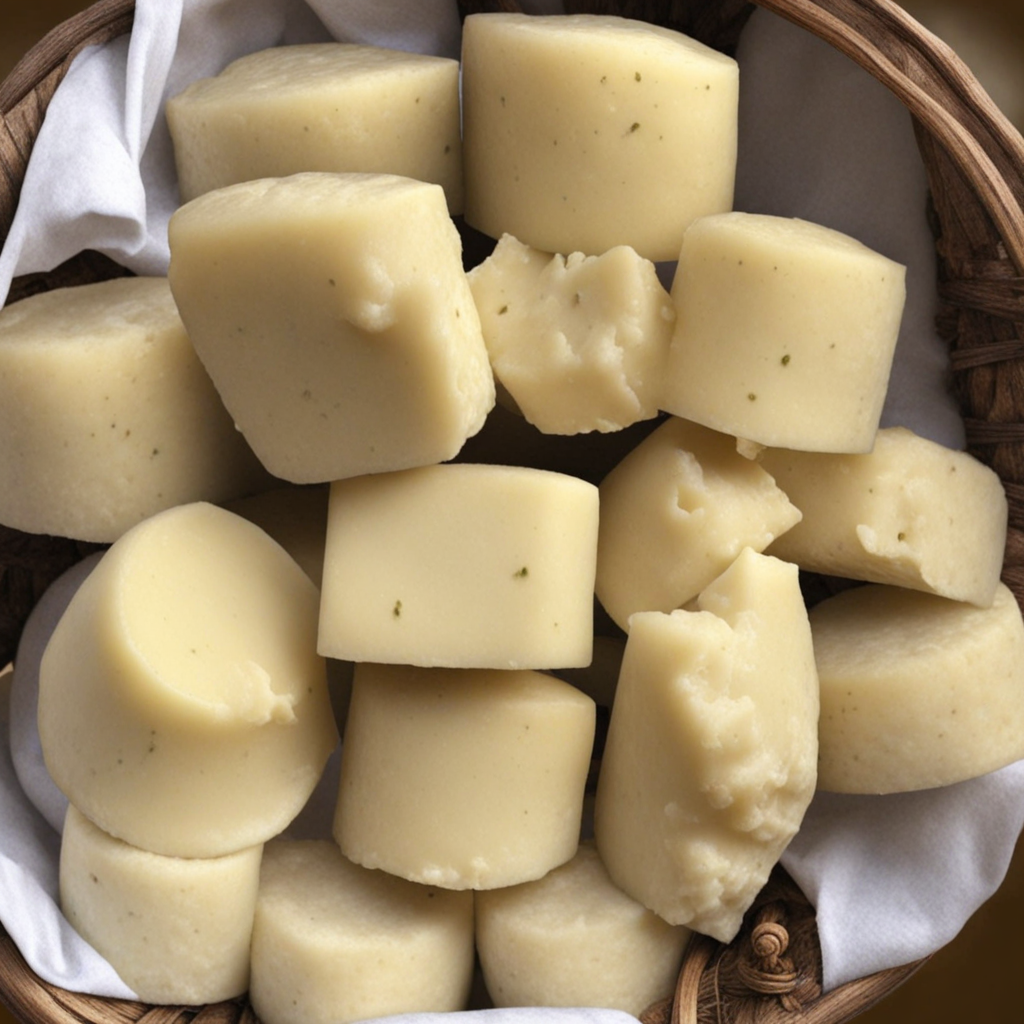Chhurpi
Churpi, a traditional dairy product from Nepal, holds a cherished place in the culinary landscape of the Himalayan region. This unique cheese, made primarily from the milk of yaks or cows, is a staple among the indigenous communities of Nepal, particularly in the high-altitude areas where these animals are raised. The history of churpi is deeply intertwined with the nomadic lifestyle of Himalayan herders, who have been making this cheese for centuries as a means of preserving milk in a form that can be consumed over an extended period. The process of making churpi is both an art and a necessity, stemming from the practical needs of rural communities where fresh dairy can be scarce. The flavor profile of churpi is distinctive and multifaceted. It presents a unique blend of creaminess and earthy notes, often accompanied by a pleasantly chewy texture. The taste can range from mildly tangy to robustly savory, depending on the fermentation process and the specific ingredients used. Some varieties of churpi, especially the ones made from cow's milk, can have a sweeter undertone, while those made from yak milk tend to be more pungent and intense. The cheese is usually enjoyed as a snack, often paired with tea or served as a side dish, and it has gained popularity for its high protein content and nutritional value. Preparation of churpi is a meticulous process that begins with the collection of fresh milk. The milk is first boiled and then cooled before adding a natural rennet or starter culture, which initiates
How It Became This Dish
The Enigmatic History of छुरपी (Chhurpi) from Nepal Introduction In the high-altitude landscapes of the Himalayas, where the air is thin and the environment can be harsh, a unique food item has thrived for centuries: छुरपी (Chhurpi). This traditional dairy product, made from cow or yak milk, is not just a source of nourishment but a significant cultural artifact of the communities living in the mountainous regions of Nepal. The history of Chhurpi is deeply intertwined with the nomadic lifestyles of the people who inhabit these rugged terrains, reflecting their resilience, ingenuity, and connection to their environment. Origins of Chhurpi Chhurpi's origins can be traced back to the ancient pastoral traditions of the Himalayan regions. For millennia, the indigenous communities in Nepal, particularly the Sherpas, Tamangs, and other ethnic groups, have relied on herding as a primary means of sustenance. The harsh climate and high altitudes posed challenges for agriculture, making livestock rearing a logical adaptation. As the herders sought ways to preserve and utilize their milk, the process of making Chhurpi evolved. The earliest forms of Chhurpi were likely simple curds made from fresh milk, which were then dried and hardened to create a durable food source. This technique of fermentation and drying not only extended the shelf life of the dairy product but also made it portable and easy to carry during long treks across the mountains. The high protein content and the rich flavor profile of Chhurpi made it an ideal food for laborers and travelers in the rugged terrains of the Himalayas. Cultural Significance Chhurpi holds a special place in the culinary traditions of Nepal, particularly in the communities that inhabit the mountainous regions. It is often regarded as a staple food, providing essential nutrients necessary for survival in the cold climates. The production and consumption of Chhurpi are deeply embedded in the local customs and rituals. In many Himalayan villages, Chhurpi is not merely a food item; it is a symbol of hospitality and community. When guests arrive, offering Chhurpi is a gesture of warmth and welcome. It is often served alongside traditional drinks like Tongba (a fermented millet drink) or tea, fostering a sense of connection and camaraderie among people. Additionally, Chhurpi is used in various traditional dishes. In some regions, it is incorporated into soups and stews, adding a distinct flavor and nutritional value. In contrast, the harder varieties of Chhurpi are often chewed as snacks, providing energy during long treks or arduous workdays. Its versatility has solidified its status in the daily diets of many mountain communities. Development Over Time As Nepal has evolved through the centuries, so too has the production and consumption of Chhurpi. With the introduction of modern technologies and changing lifestyles, the ways in which Chhurpi is made and enjoyed have transformed. In the past, Chhurpi was primarily produced in small, household-scale operations. Families would gather to make the cheese, using traditional methods passed down through generations. Each family had its unique recipe, influenced by local ingredients and techniques. However, as urbanization and modernization began to take hold in Nepal, the demand for Chhurpi also changed. While traditional methods still exist, commercial production of Chhurpi has emerged, leading to the availability of different varieties in local markets. This commercialization has opened up new opportunities for farmers and producers, allowing them to reach a broader audience beyond their immediate communities. In recent years, the popularity of Chhurpi has also expanded beyond the borders of Nepal. As global interest in traditional and artisanal foods has surged, Chhurpi has begun to gain recognition on international platforms. Food enthusiasts and chefs have embraced this unique dairy product, integrating it into contemporary culinary practices. This newfound interest has led to a revival of traditional recipes and techniques, as well as a greater appreciation for the cultural heritage surrounding Chhurpi. Modern Challenges and Preservation Despite its cultural significance and increasing popularity, Chhurpi faces challenges in the modern world. The impact of climate change, coupled with the pressures of globalization, has affected traditional farming practices and livestock rearing. Many young people are migrating to urban areas in search of better economic opportunities, leading to a decline in the knowledge and skills associated with traditional Chhurpi production. Efforts are being made to preserve the heritage of Chhurpi and promote sustainable farming practices. Local organizations and NGOs are working to educate communities about the importance of traditional food systems and the benefits of preserving cultural practices. Workshops and training programs are being established to teach younger generations about the art of Chhurpi-making, ensuring that this unique food tradition is not lost to time. Additionally, there is a growing movement to celebrate and promote local foods. Food festivals and cultural events are showcasing Chhurpi and other traditional foods, encouraging people to reconnect with their culinary heritage. This resurgence of interest offers hope for the future of Chhurpi, as it reminds people of the rich history and cultural significance behind this beloved dairy product. Conclusion Chhurpi is more than just a food item; it is a testament to the resilience and ingenuity of the people living in the Himalayan regions of Nepal. From its humble beginnings as a simple method of preserving milk to its place in modern culinary practices, Chhurpi embodies the spirit of community, tradition, and adaptability. As the world continues to change, the legacy of Chhurpi remains a source of pride for the communities that produce it, serving as a delicious reminder of their rich cultural heritage. By embracing both tradition and innovation, Chhurpi is poised to thrive in the future, bridging the gap between the past and present, and reminding us of the stories woven into every bite.
You may like
Discover local flavors from Nepal





